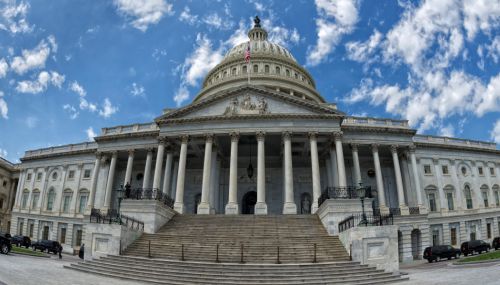All
Two New U.S. Nuclear Reactors Operational
by Ed Burke and Kelly Burke, Dennis K. Burke Inc.

Lack of oversight led to runaway costs for “most expensive power plant ever built.”
Two new nuclear reactors are completed and entering commercial operation at Plant Vogtle in Georgia. They’re the first new reactors built in the U.S. in 30 years. Each of the new reactors will power 500,000 homes and businesses with clean energy. They join two older reactors at the same site.
Vogtle will make the state’s electrical grid more reliable and resilient for the next 80 years, and help the utility meet its goal of zeroing out carbon emissions by 2050.
In March, Georgia Power Co. announced the carbon-free milestone while avoiding mentioning that the project was seven years late with over $18 billion in cost overruns.
Construction on the new Vogtle reactors began in 2009. At that time, the reactors were projected to be completed by 2017, with a $14 billion price tag. With all of the cost overruns, the reactors actually cost Georgia Power and three other owners a total of about $35 billion.
So, How Does this Happen?
Georgia is one of only four states in the nation with no Consumer Utility Counsel (CUC), an agency designated by most states to act as an independent ratepayer advocate when utility commission decisions are made. The Georgia legislature eliminated the CUC in 2008, the year before Plant Vogtle began construction. With no consumer advocate at the commission, losing this agency was a great loss to ratepayers.
Georgia doesn’t have any stated renewable energy goals that it is trying to meet. The Public Service Commission (PSC) was prevented from doing any analysis evaluating the costs of nuclear compared to clean energy alternatives. As a result, Vogtle proceeded to add up huge cost overruns.
Georgia is a regulated monopoly utility. The PSC and Georgia Power boast a “constructive regulatory relationship”. Ratepayers want affordable electricity, but they have no choice in their electricity provider.
Who Picks up the Tab?
Electric customers in Georgia will be paying billions for what may be the most expensive power plant ever built.
Almost every electric customer in Georgia will pay for Vogtle. Georgia Power owns 45.7% percent of the reactors. The Municipal Electric Authority, the city of Dalton and Oglethorpe Power Corp own the remaining shares. Vogtle also has contracts for power with utilities in Alabama and Florida.
In December, regulators approved an additional 6 percent rate increase on Georgia Power’s 2.7 million customers to pay for $7.56 billion in remaining costs at Vogtle, with Georgia Power picking up $2.6 billion in remaining costs.
Residential customers will need to pay an additional $8.97 a month, on top of the $5.42 increase that took effect last summer when the first new reactor began operating.
Nuclear Missteps
At $35 billion, Plant Vogtle is the most expensive power plant on earth. Vogtle’s electricity is estimated to cost $170 to $180/MWh, which is incredibly high.
The U.S. can’t achieve carbon-free electricity without nuclear power. Could the whopping cost of Vogtle discourage utilities from chasing nuclear power?
With Vogtle in mind, utilities in the U.S. took a step back to compare the current costs of nuclear and clean energy alternatives, shelving plans for 24 new reactors. There were two reactors under construction that were halted.
Even with lavish federal subsidies, high costs are why the other states decided against building nuclear plants. Instead, they went with more affordable clean-energy solutions. For example, 2,200 MW of solar plus storage would have cost around $5 billion.
Georgia Power also plans to build more natural gas generation in coming years, saying demand is rising sharply. In 2022, the Georgia PSC voted to authorize Georgia Power to add 2,300 MW of natural gas into its generation mix, even more than what Vogtle adds. That rapidly increasing demand is being felt by multiple utilities across the country as energy intensive businesses like manufacturing steel or microchips, computer data centers, and the growing number of EVs.
Small Modular Reactors
Small modular reactors (SMRs) are a class of small nuclear fission reactors, designed to be built in a factory, shipped to operational sites for installation and then used to power buildings or other commercial operations. Commercial SMRs can be designed to deliver an electrical power output as low as 5 MW or as high as 300 MW per module.
The U.S. Department of Energy had estimated the first SMR in the United States would be completed by NuScale Power around 2030, but this deal has since fallen through after the customers backed out due to rising costs.
Proponents claim that SMRs would be less expensive due to the use of standardized modules, which could be industrially produced in a dedicated factory off-site. SMRs do, however, also have economic disadvantages. Several studies suggest that the overall costs of SMRs are comparable with those of conventional large reactors.
Maybe SMRs aren’t quite ready for prime time yet, but there’s a good chance they will be part of the energy mix in the future.
Ed and Kelly Burke are respectively Chairman of the Board and Senior Marketing Manager at fuel distributor Dennis K. Burke Inc. They can be reached at 617-884-7800 or ed.burke@burkeoil.com and kelly.burke@burkeoil.com.
Related Posts
 National Energy Choice Legislation Advances Through Committee
National Energy Choice Legislation Advances Through Committee
Posted on November 20, 2025
 New and Improved: NEFI Member Benefits Deliver More Value
New and Improved: NEFI Member Benefits Deliver More Value
Posted on October 17, 2025
 It’s Upgrade Season. Get the Sale.
It’s Upgrade Season. Get the Sale.
Posted on October 16, 2025
 The Value of Providing Value
The Value of Providing Value
Posted on October 16, 2025
Enter your email to receive important news and article updates.
